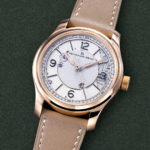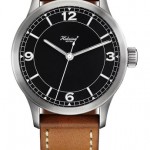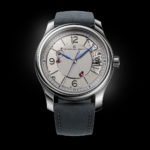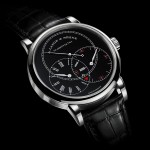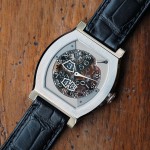In-Depth: The Life Behind the Deadbeat Seconds
The second was a long time coming.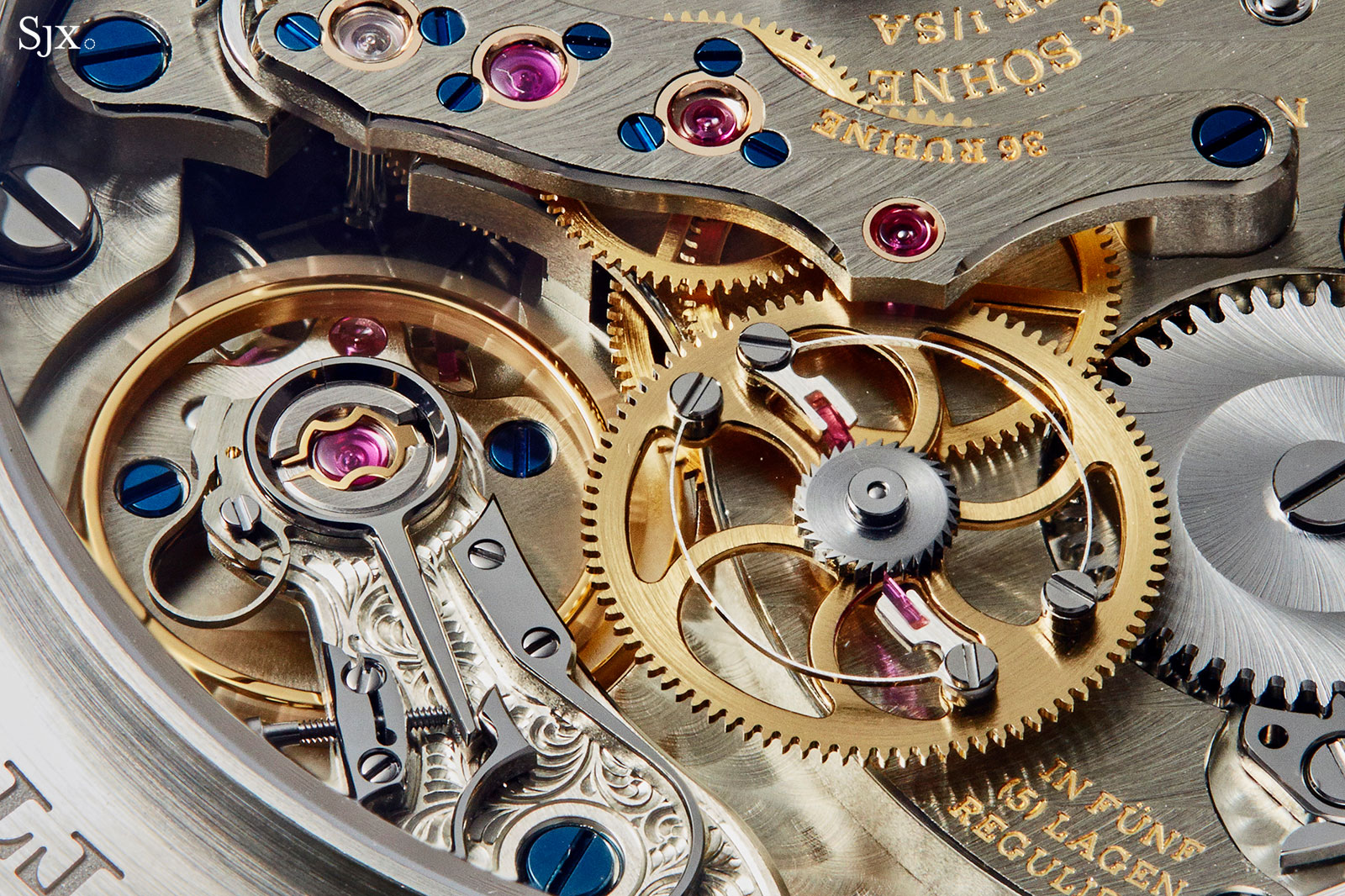
Watchmaking combines technical achievement and aesthetic expression, and sometimes the two are inextricably linked. In a handful of instances, the technical achievement transforms the artistic value, as in the jumping seconds. The complication is perhaps the most abrupt expression of time.
Is there any value in having a mechanical jumping seconds? In exploring that, we first have to understand how the seconds as a unit of time came to be.
Time in antiquity
In today’s world where no one bats an eyelid when a satellite is sent into orbit, time and space are perceived to be intimately linked as one. Before Einstein hit upon the theory of relativity, the link between space and time was nebulous, but the definition of time was well established.
For the ancient Egyptians, daytime was based on the apparent movement of the Sun, and the night sky was segmented into smaller divisions based on the position and motion of stars. Over the subsequent millennia, the Sumerians and Babylonians further refined the time measurement to better account for stellar motion.
The Babylonians, inspired by the Egyptians, approximated the movement of the Sun’s apparent revolution into 360 divisions, due to the number of days required for the Sun to trace its path on the ecliptic and their predilection for a base-60 (or sexagesimal) system.
This is also the origin of 360 degrees required for a complete revolution, which was explained by Malcolm Correll in the volume 15 of scientific journal The Physics Teacher. By the 6th century B.C., the unit of time uš was used to divide the full day into 360 parts, which is equivalent to four minutes of our present definition, and each uš was in turn subdivided into 60 gar (or four seconds). This translates each gar into one arc-minute of celestial rotation.
In 333 B.C., Alexander the Great expanded his Greek empire into Babylon and several Greek astronomers, most notably Ptolemy, adapted the sexagesimal system into their culture. It was in Ptolemy’s influential book (made popular through a 15th century translation into Latin), Almagest, that he proposed further divisions of the hour into pars prima minuta, or “first small division”, giving us minutes, and pars secunda minuta, or “second small division”, giving us seconds. (For more on the history of units of time, Scientific American offers an easily digestible overview.)
The Greeks also adopted the ancient Egyptian standard of 24 hours in a day, with a fixed length for each hour. From then, each day was divided into 86,400 seconds – 24 hours in a day, 60 minutes in an hour, and 60 seconds in a minute. That sexagesimal-inspired system ultimately led us to the present Système International (SI) unit of time, the second. As such, a watch designed for chronometry has to indicate the precise second, every second.
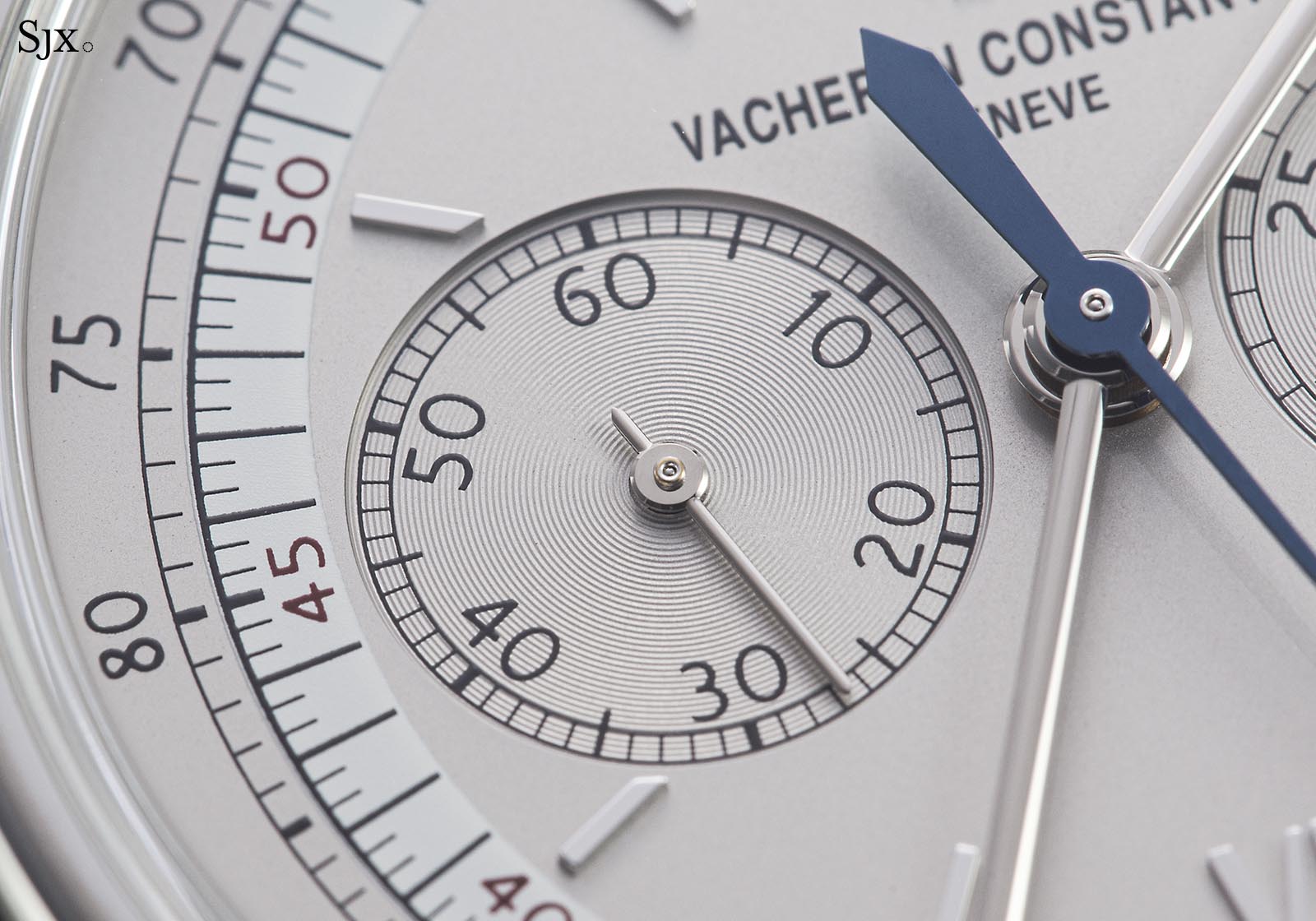
Two forms of seconds markings on the Vacheron Constantin Cornes de Vache chronograph: whole seconds on the constant seconds sub-dial, and thirds of a seconds on the elapsed second track for the chronograph
Just a second
In the good old days when pendulum clocks were the de facto timekeepers in homes and offices, it was easier to know exact second of the day, because such clocks had the interior space for the pendulum – suspended from a metre-long rod – to oscillate in two-second intervals, or 0.5 Hz.
The clock escapement unlocks twice during each oscillation, giving it the characteristic “tick” and “tock”, each representing one second. The length of the pendulum’s rod governs this – the farther the weight is away from the pivot, the longer each oscillation takes.
Because the 0.5 Hz frequency was the most practical for good timekeeping, most pendulum clocks were equipped with a rod about a metre in length, or more precisely, 0.994 m. The ideal length was derived from the oscillation period equation, and is independent of the mass of the pendulum.
Naturally, installing a pendulum in a watch was not feasible. Thus, the replacement was invented by Christiaan Huygens and Robert Hooke, each working independently, around 1670. It was the balance wheel, which oscillates back and forth driven, not by gravity, but by the energy stored in the hairspring.
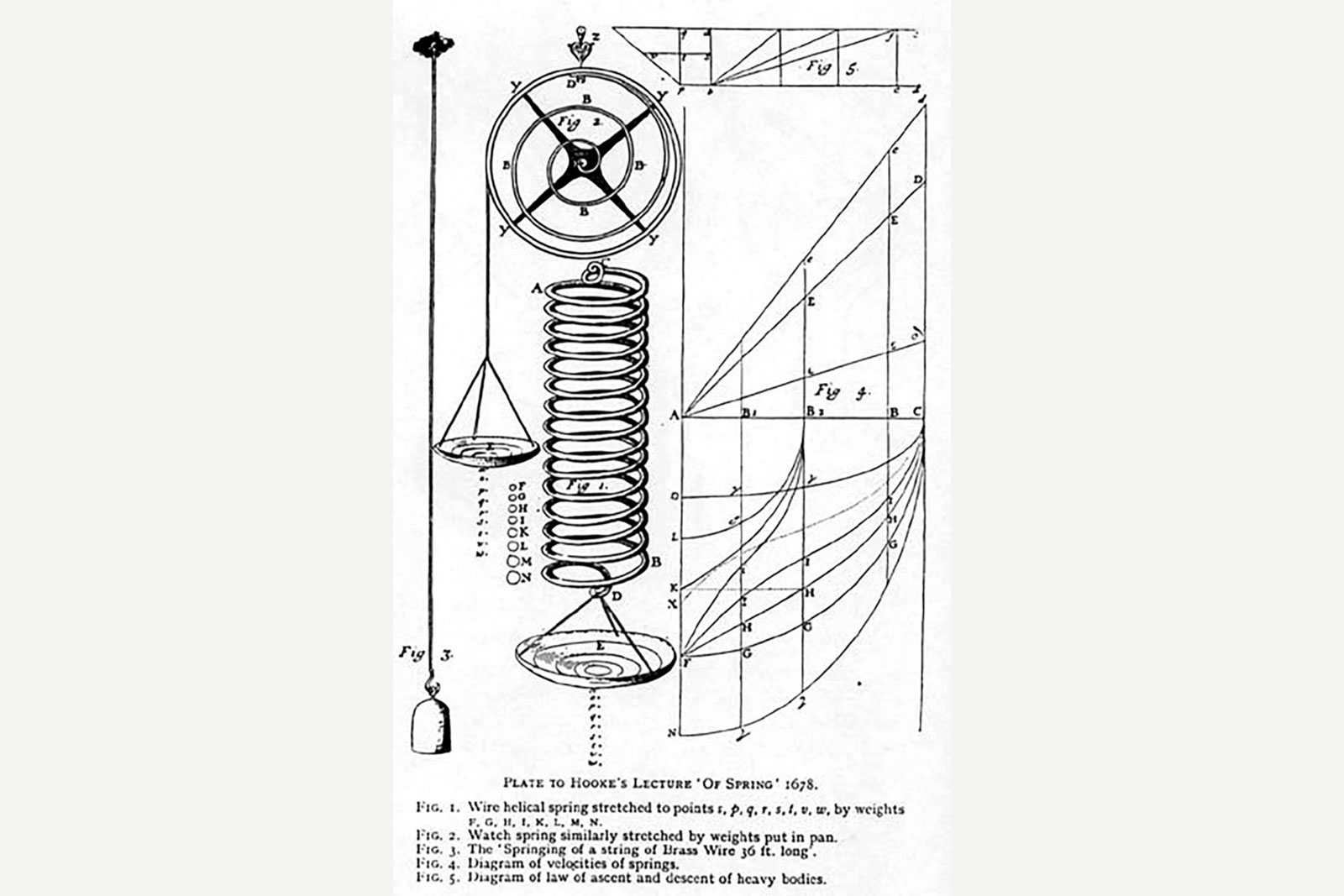
A plate from Hooke’s 1678 lecture ‘Of Springs’
But even after three centuries of evolution, the balance wheel comes with a caveat: it tends to oscillate relatively fast compared a pendulum. The common ETA 2892 movement for instance, contains a 4 Hz balance wheel of 8 mm diameter, while the extreme example of a mechanical wristwatch with an ultra-slow, 1 Hz frequency, the Antoine Martin Slowrunner, required a balance wheel of 24 mm – and still never made it to commercial production.
Even with the impractically large 24 mm balance, the Slowrunner still ran at twice the frequency of a pendulum clock’s 0.5 Hz, which is required to indicate each second with precision. In fact, to achieve 0.5 Hz in a wristwatch requires a balance wheel larger than an entire movement.
(But to be more precise, the ideal 0.5 Hz oscillation holds only because the Swiss lever and pendulum escapements both impart two impulses to the balance per oscillation; that doesn’t apply to other escapements, such as the duplex or detent escapement, due to the different geometries.)
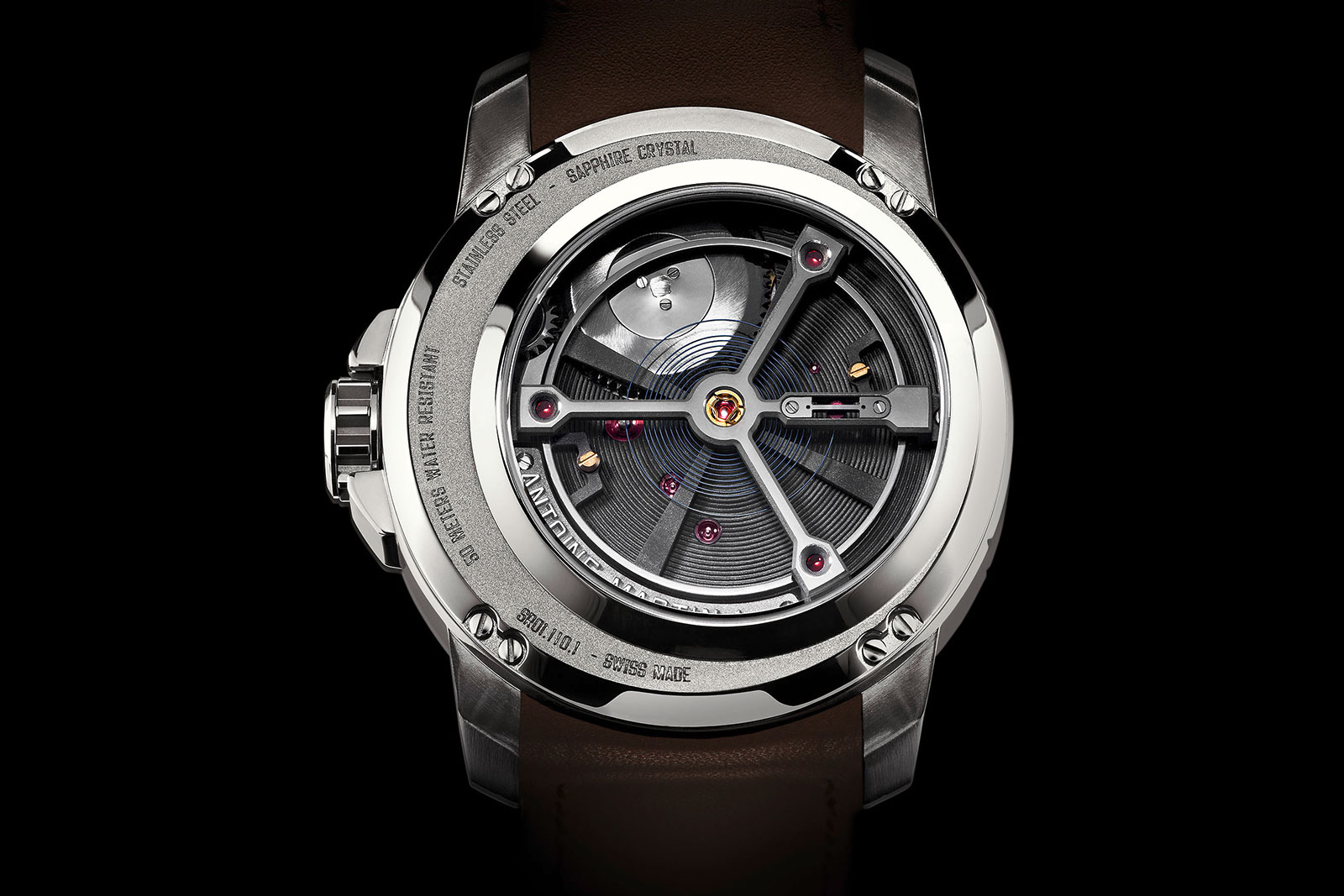
The enormous balance wheel inside the Slowrunner. Photo – Antoine Martin
But that leads to the question: why is the discrete ticking of seconds necessary in the first place? Doesn’t an ordinary seconds hand making one revolution a minute do the job? It depends on how pedantic you are, specifically, in relation to several factors.
The first: the watch needs to show each second because that is the standard unit of time. I suspect physics professors will agree with me there.
Before the adoption of SI units, the French relied on the metric system. In 1799, after the French Revolution, with the recommendation from a commission set up by the French Academy of Sciences, France officially adopted the metric system, of which the second became the de jure unit of measure for time.
Even so, the second was already a commonly used unit of time before that, making it important to keep track of time in seconds, which is why the indication of seconds was paramount in scientific or technical instruments. (In fact, there were preliminary proposals to use the 0.994 m length of the one-second pendulum as the definition of the metre; the current definition is only 0.6% away.)
This was before the invention and popularisation of the chronograph in the 1820s – which allowed for time to be “stopped” and recorded – which meant recording elapsed time periods to the nearest second was just about as precise as one could get, with 60 hashmarks around the dial to indicate complete seconds.
The reading of such analogue displays was usually done to the nearest hashmark due to human reaction time, which meant only being able to measure whole seconds in practice. While one could read halfway between divisions, it was not recommended due to the uncertainty of the continuously moving seconds hand.
To reduce this error, scientific time measurements were (and still are) done repeatedly over extended durations in order to average out the error. A discrete seconds indication would enable a technician to measure events as precisely as possible, something made possible with the development of jumping seconds in the late 18th century.
And the second factor is the ability to synchronise a watch precisely with a reference time. Proper time synchronisation has been a practical consideration since timekeeping devices were invented. Today, it is easy to tell if two quartz watches are discordant, because the discrete jumps of the seconds hands are jarring, making it quickly obvious if they are out of sync. Similarly, mechanical watches with discrete jumping seconds quickly reveal if two timepieces are coordinated.
Jumping seconds in wristwatches
The constraints imposed by wristwatch dimensions mean 0.5 Hz movements are not possible, because they would be too big. At the same time, higher beat rate movements are ideal for wristwatches, since such movements will be less affected by the motion of the wrist. This is because the balance wheel is most disturbed when the wrist motion is close to the frequency of the balance wheel, due to the effect of resonance (or forced oscillation).
Secondly, any impulse or shock to the movement only affects one period of oscillation, so if the period of oscillation is shorter, the movement records less inaccurate time. Conversely, a higher frequency theoretically increases wear as more oscillations occur per second. Thus, the watch industry has coalesced into making movements operating at 3-4 Hz, a perfect compromise between size, impact resistance, and reliability.
Therefore, the ideal is a wristwatch running at 3-4 Hz, but one with a jumping seconds indication. This has been done, and usually in either of two ways: a bolt-on complication alongside (or more frequently, over) the gear train; or integrated as an intrinsic part of the gear train through a remontoir.
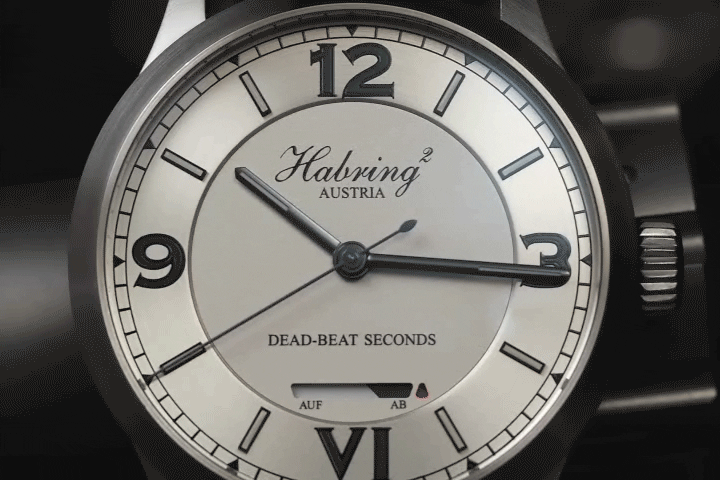
An example of a deadbeat seconds hand of a Habring2 wristwatch. Video – Habring2
The star-and-flirt mechanism
This first method – having the jumping seconds, as an add-on complication – is the simplest. The archetypal modern example is the Jaeger-LeCoultre Geophysic True Second powered by the cal. 770 with a 4 Hz balance.
In the cal. 770, the deadbeat seconds operates with a star and flirt along with a secondary hairspring, running in parallel to the going train. The widely-produced Chézard cal. 115/116 of the 1950s relied on a similar mechanism as well.
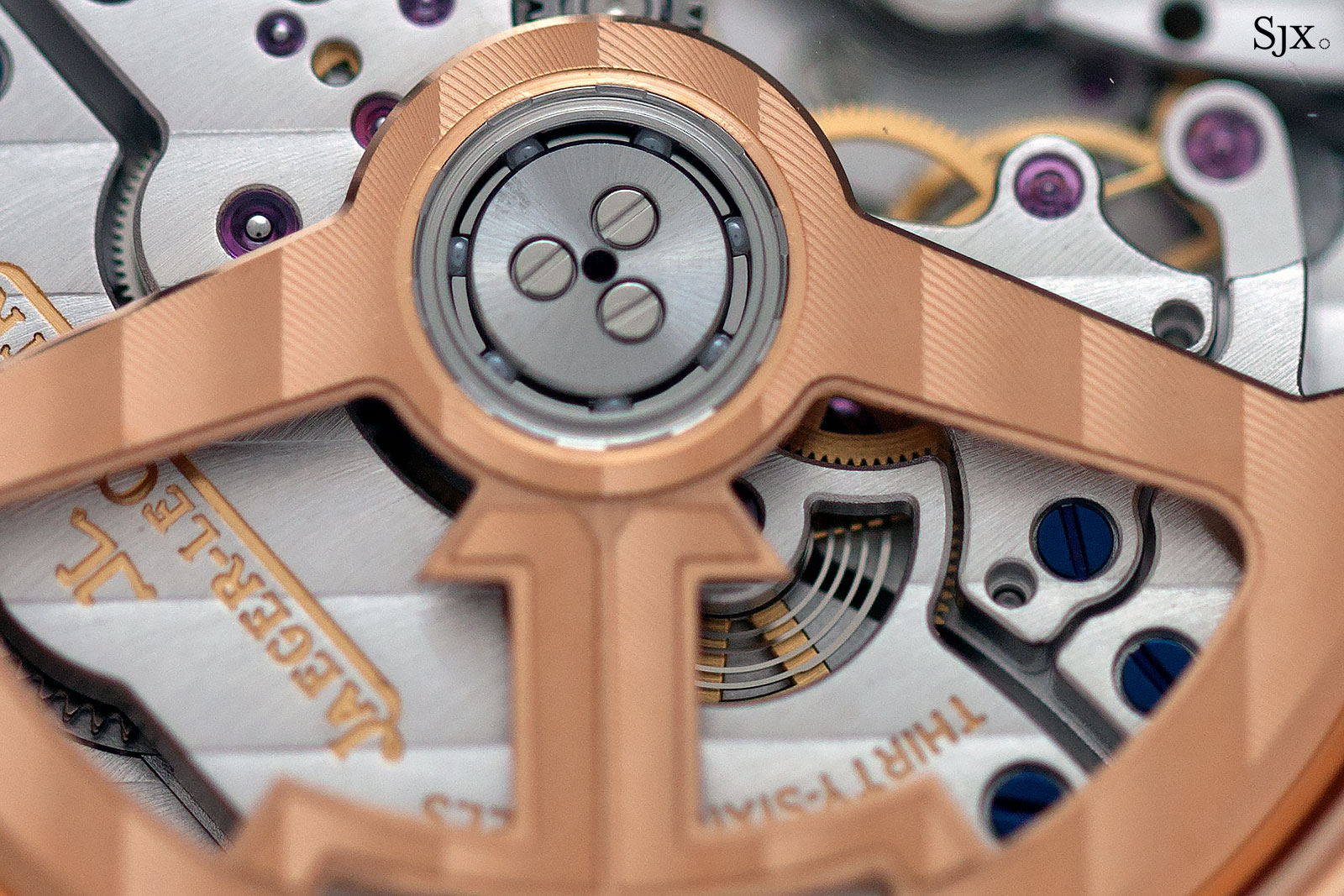
The JLC cal. 770 with the secondary hairspring visible
In essence, the deadbeat seconds here works like a secondary escapement that is built to release every second. It is powered by the primary going train, which beats at 4 Hz. The escape wheel has a star-shaped wheel attached underneath. This star regulates the jumping seconds hand – after eight beats of the escapement (or a full second) later, the star rotates just enough to release a linear lever called the flirt. The flirt then makes a full revolution until it contacts the next tooth of the star, and in the process drives the jumping seconds hand forward by one full step.
Because the energy has to be released instantaneously through the flirt, it is powered by a secondary hairspring, which is continuously recharged by the regular going train. This secondary hairspring also functions as a store of energy, decoupling the continuous 4 Hz motion of the going train from the instant, once-per-second release of power to the flirt and jumping seconds hand.
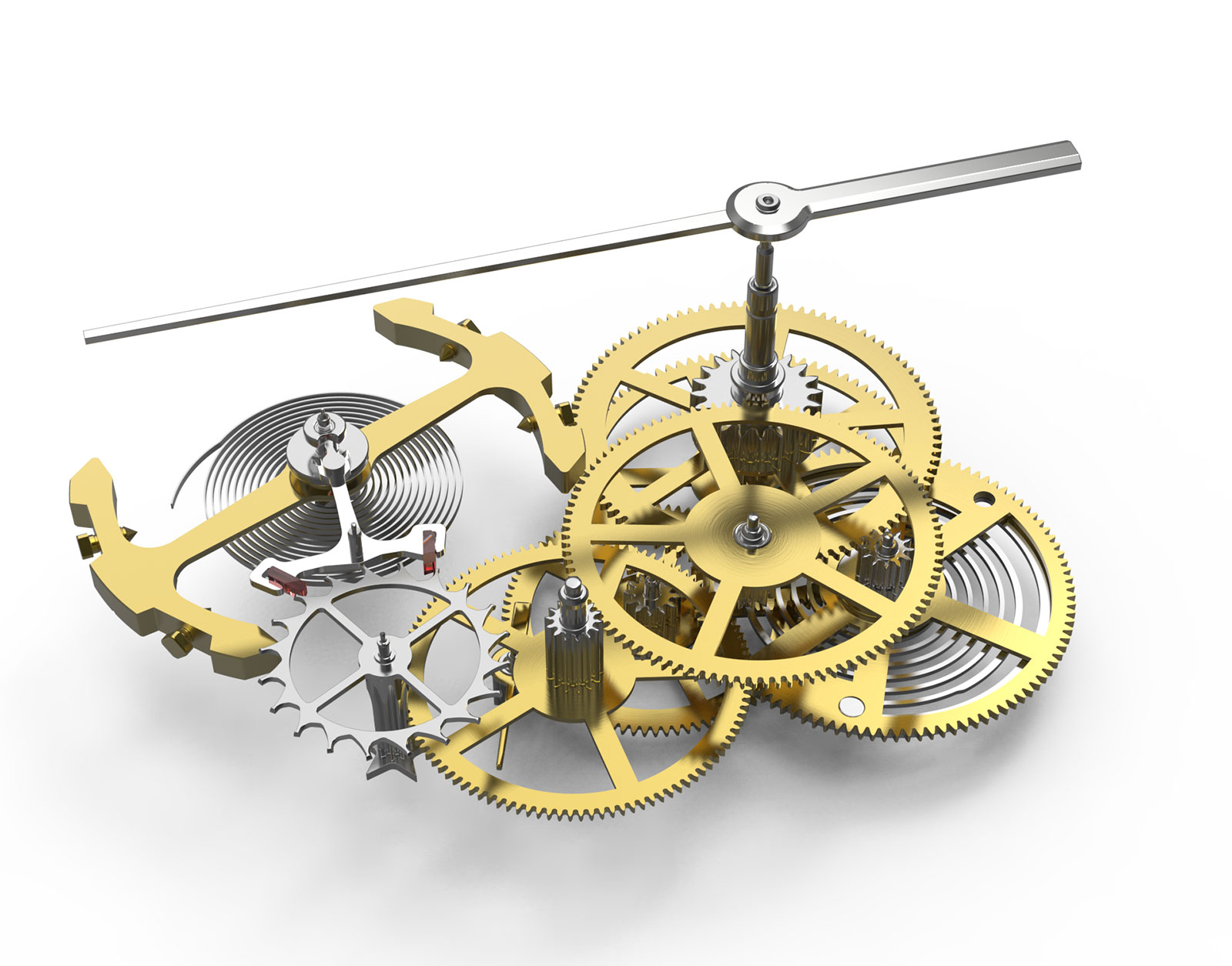
The deadbeat seconds mechanism, along with the balance and escapement, of the JLC cal. 770. Diagram – Jaeger-LeCoultre
This construction means the escape wheel imposes a greater load on its pivot, and consequently, the jewel bearing supporting its pivot. In theory, the increased friction means less energy is transmitted to the balance, affecting the amplitude of the oscillation. Consequently, long-term timing stability may become an issue if the movement is not fully wound every day, though in practice such movements, if properly serviced, are known to keep time as well as ordinary calibres.
Such movements also features a subtle peculiarity specific to this type of jumping-seconds – the seconds hand will creep forwards slightly, imperceptibly but surely, before jumping to the next second. This is unavoidable due to construction of the movement, specifically the star wheel slowly rotating forward together with the flirt, before releasing it.
The secondary escapement
Doubtlessly inspired by 18th and 19th century pocket watches, and more practically to circumvent the issues associated with the star-and-flirt system, independent watchmaker Petermann Bédat developed a secondary escapement driven by the fourth wheel of the going train. At the centre of the secondary escapement is a four-armed anchor with four jewel pallets that converts the continuous motion of the gear train into the jumping of the seconds hand.
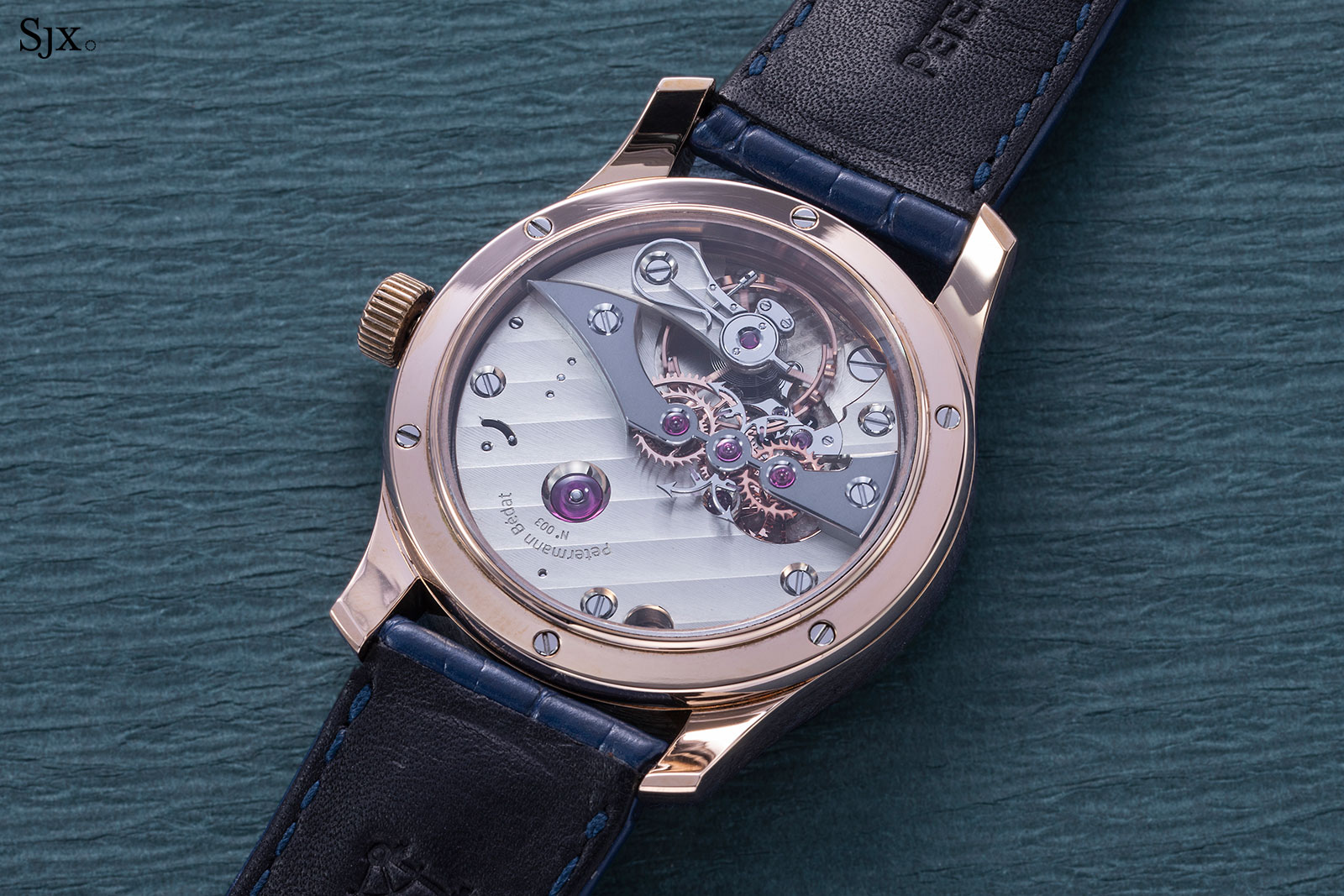
The Petermann Bédat cal. 171 with deadbeat seconds driven by an secondary going train constructed on top of the three-quarter plate
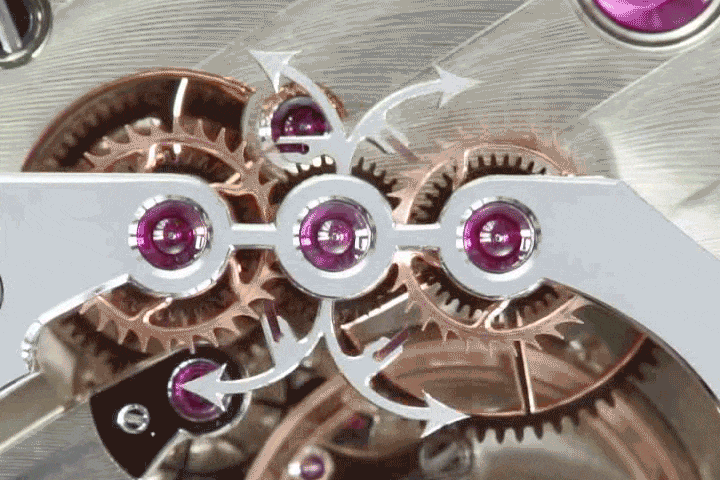
The unusual Petermann Bédat escapement relies on a two-sided anchor (with four arms tipped with arrows) gently rocking back and forth as it locks and unlocks on each side: As the fourth wheel (extreme left) rotates, the ratchet wheel on the left rotates with it, sliding one pallet on the anchor out along the way. The oscillation of the anchor causes the opposing pair of pallets to lock and unlock the adjacent spring-loaded ratchet wheel sequentially, advancing the seconds hand in one-second steps. Video – Petermann Bédat
The use of a secondary escapement to drive the jumping seconds hand is actually an old idea when it comes to wristwatches, having been used in the Rolex Tru-Beat launched 1954, in a decade when deadbeat seconds was fashionable, reputedly being marketed as a tool for doctors to measure pulse rates. More recently, the secondary jumping seconds escapement has been found in several De Bethune watches, including the DB25T Zodiac, as well as the Arnold & Son’s Dial Side True Beat.
But perhaps most notable is the Habring2 Erwin, which has the distinction of being the most affordable deadbeat seconds watch available today. Habring2 has made the deadbeat seconds something of a house specialty, having offered the complication almost as soon as the brand was founded, presenting its first watches with the complication – powered by new-old-stock Chézard cal. 116 movements – in 2005.
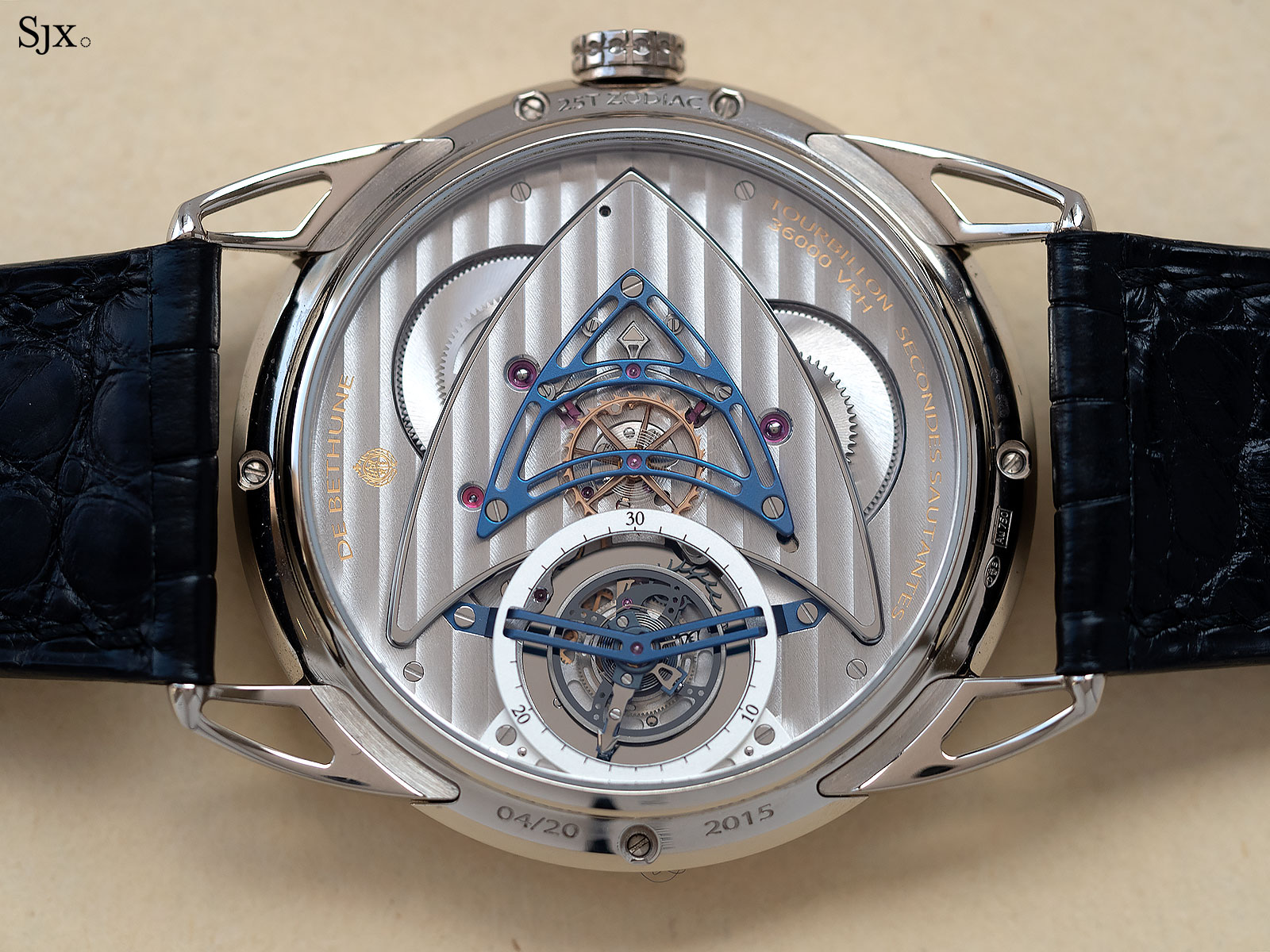
The rear of the De Bethune DB25T Zodiac, with the secondary escapement for the deadbeat seconds under an open-worked, delta-shaped bridge
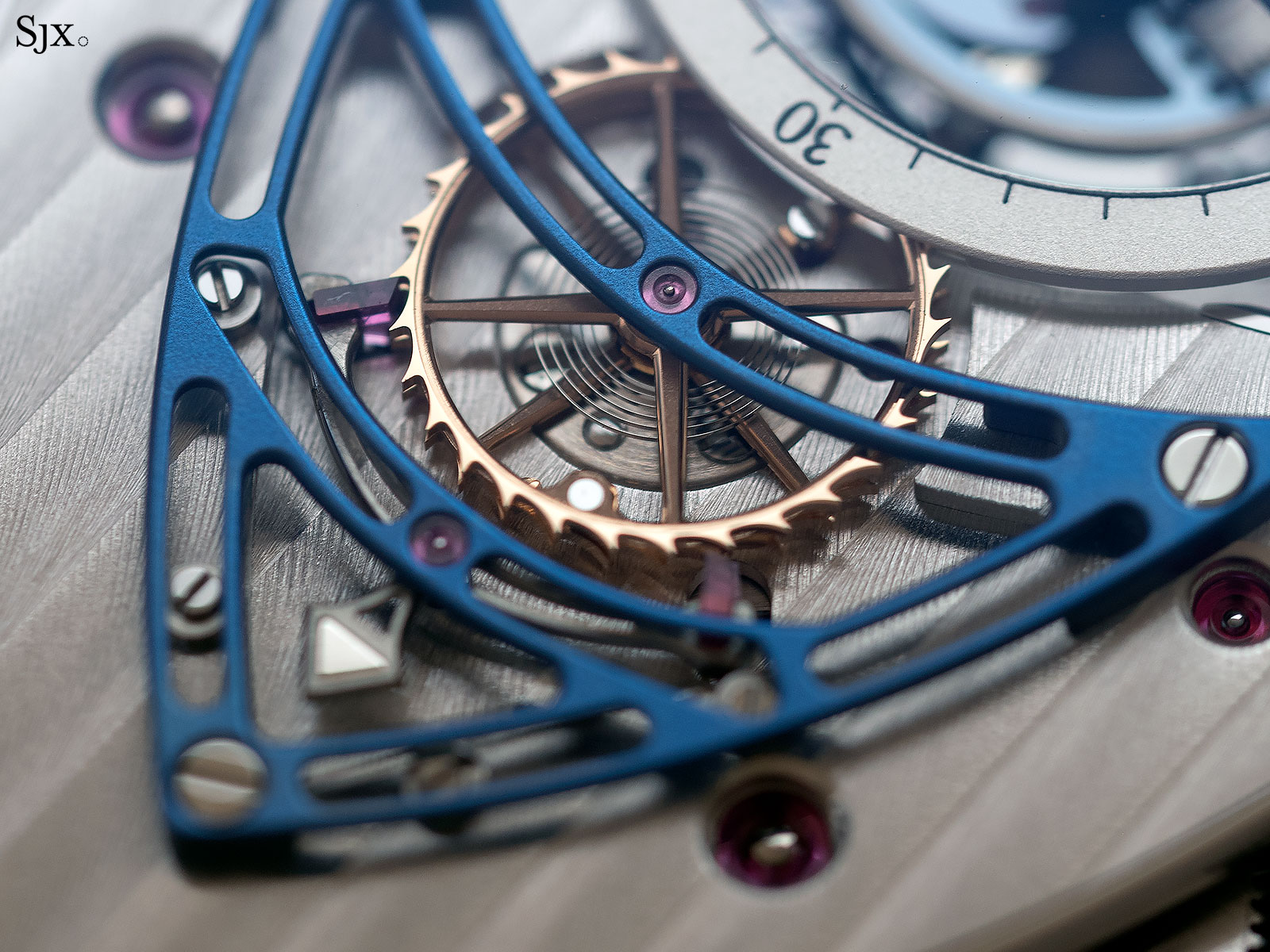
The secondary escapement with its own hairspring, twin escape wheels and pallet lever
The one-second remontoir
This method of creating a jumping seconds is more elegant, but trickier to implement. In fact, this type of jumping seconds can be seen as an offshoot of a complication fundamental to timekeeping – the remontoir d’égalité constant force mechanism. The remontoir divides the large torque variations from the unwinding mainspring into smaller units, reducing the variance of torque over the period of the running time, a desirable quality in a wristwatch as it means isochronism even with an extended power reserve.
A remontoir can be built to function on an arbitrary duration of time according to the design of the watch or movement – the Lange Zeitwerk for instance, has a 60-second remontoir to facilitate the digital jumping minute display. Longer-period remontoirs instead use cams such as a Reuleaux triangle – an old invention most closely associated with Derek Pratt in modern watchmaking – or a jewel roller as found in the Zeitwerk. Such set-ups facilitate the slow-duration release with more accuracy, as well as allow for more generous tolerances in the release mechanism, making it easier to assemble and adjust.
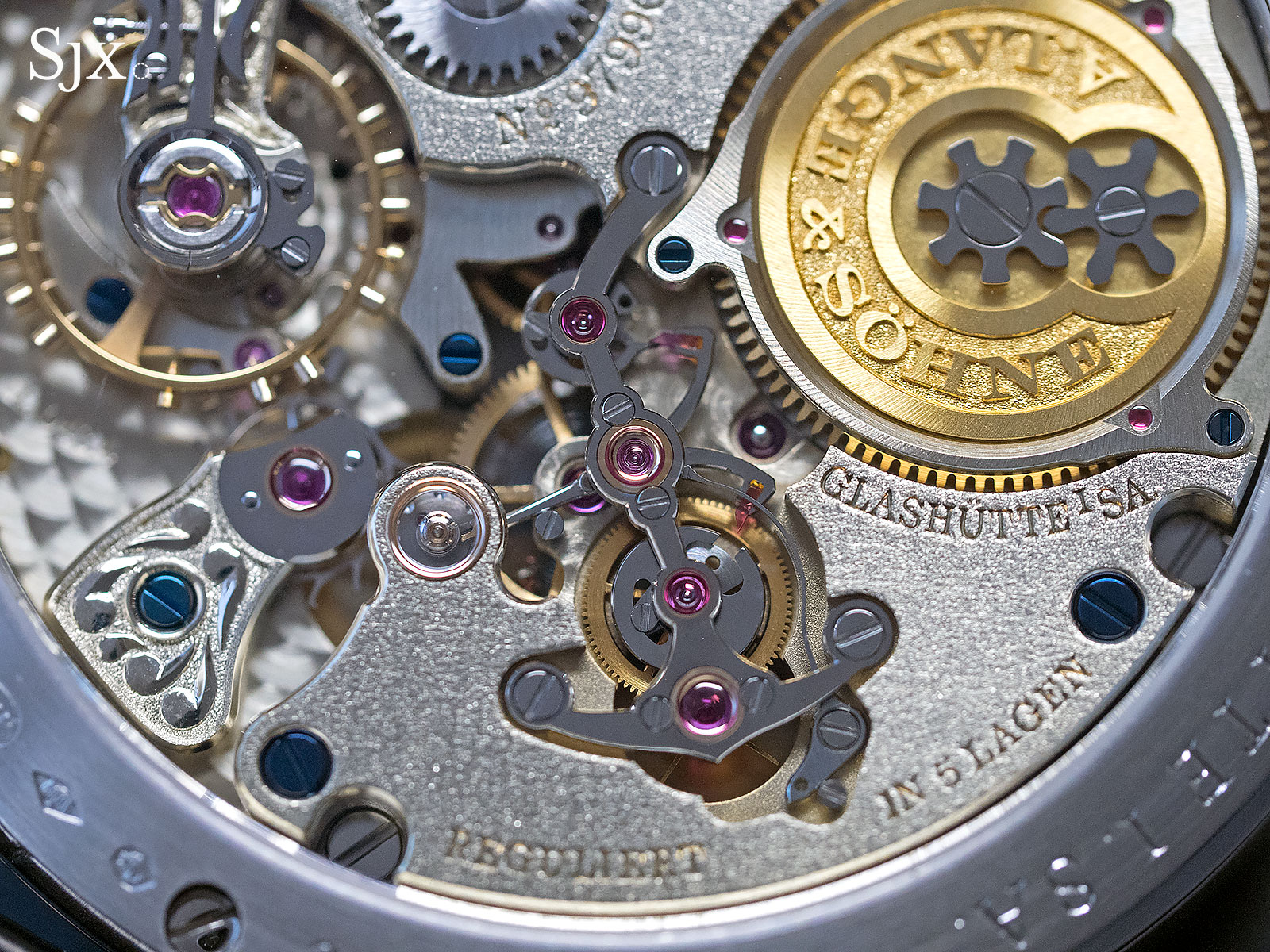
Secured by an anchor-shaped bridge is the constant force mechanism of the Lange Zeitwerk
For jumping seconds, a remontoir designed to release every second is logical, making the deadbeat seconds a convenient by-product of the remontoir’s function. Strictly speaking, in terms of chronometry, since the main purpose of a watch is good timekeeping, the remontoir supplies a constant, averaged force to the escapement for that purpose; the jumping seconds, in contrast, is more of an aesthetic complication in the modern day.
Here the seconds hand is connected to the going train, as part of a one-second remontoir. The constant-force mechanism works by having an intermediate spring just before the escapement (usually connected to the third or fourth wheel), and it provides just enough energy for six to eight vibrations (which is one second, depending on the frequency) of the balance wheel. This intermediate spring winds down during those vibrations, and at the end of one second, a release system (similar to the star and flirt) releases the going train to recharge the intermediate spring, while driving the seconds hand forward a full beat.
An excellent example of the “natural” jumping seconds mechanism is found in the F.P. Journe Tourbillon Souverain Vertical. Instead of the more common spiral remontoir spring, a flat blade spring is used to keep tension on a pivoting lever that rocks back and forth, providing the constant force to the escapement as it locks and unlocks.
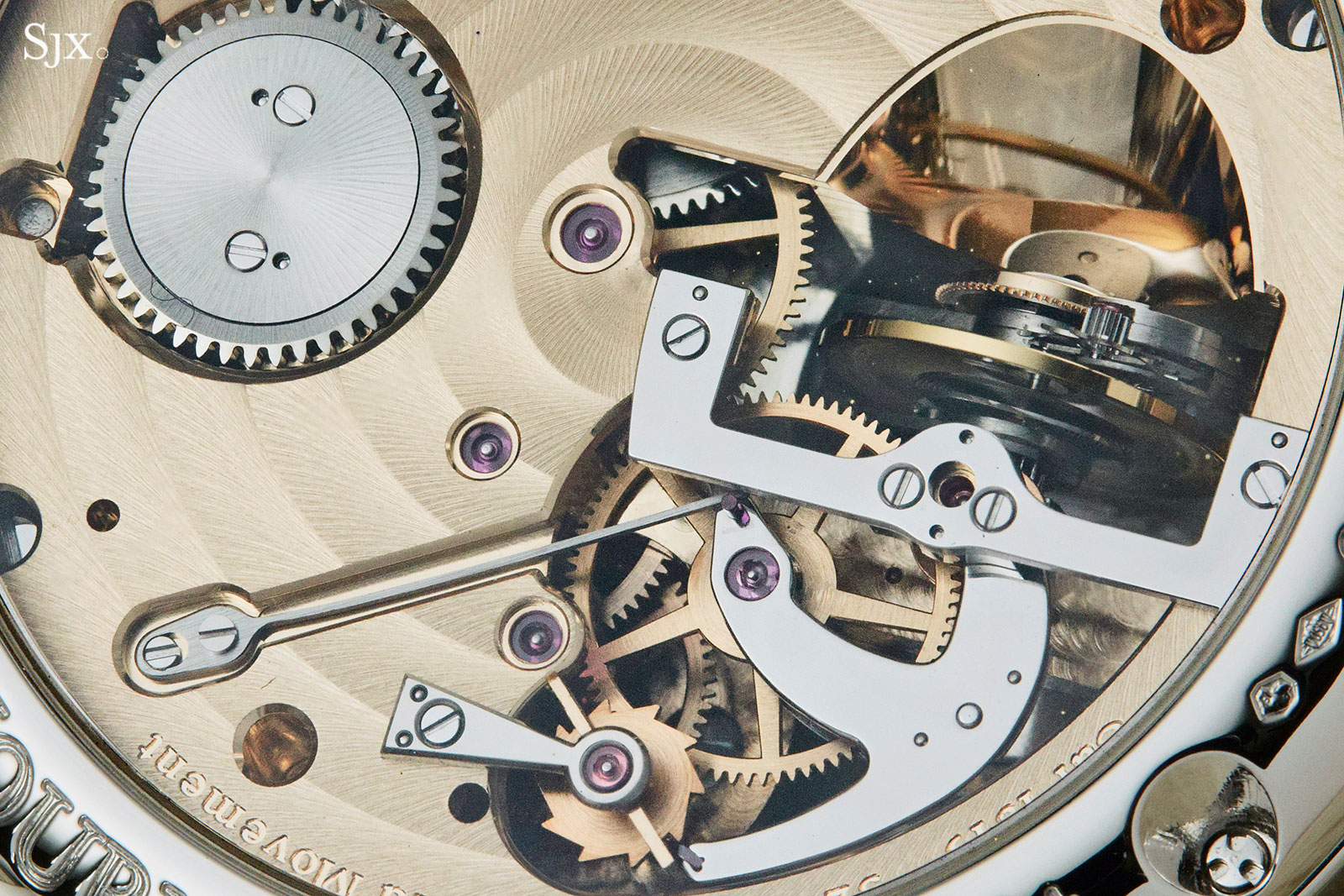
The cal. 1519 in the Tourbillon Souverain Vertical – notice the blade spring, lever, and ratchet wheel at bottom. The construction of the remontoir means that when there is insufficient torque from the mainspring to the blade spring, the remontoir disengages and the seconds hand sweeps along, serving as a reminder that the watch should be wound
Instead of a flirt, the lever has a jewel pallet at its tip, which releases a ratchet-shaped star wheel, allowing it to move forward by one tooth every second. This enables the going train to cock the pivoting lever using the force provided by the mainspring through the going train, which recharges the blade spring with another small, consistent unit of energy, beginning the cycle once again.
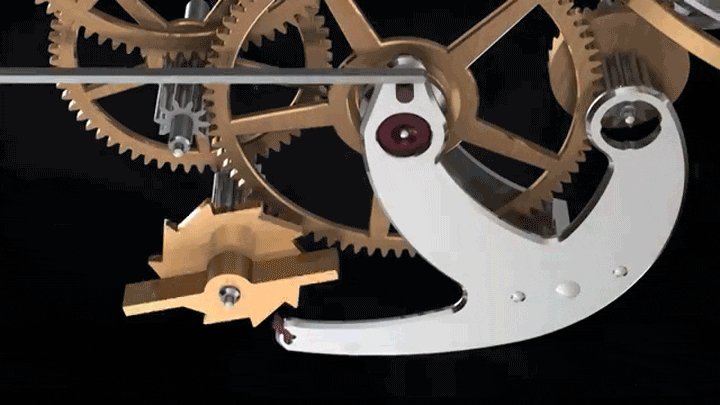
An animation of the remontoir d’égalité in operation, showing the pivoting arm against the star wheel. Animation – F.P. Journe
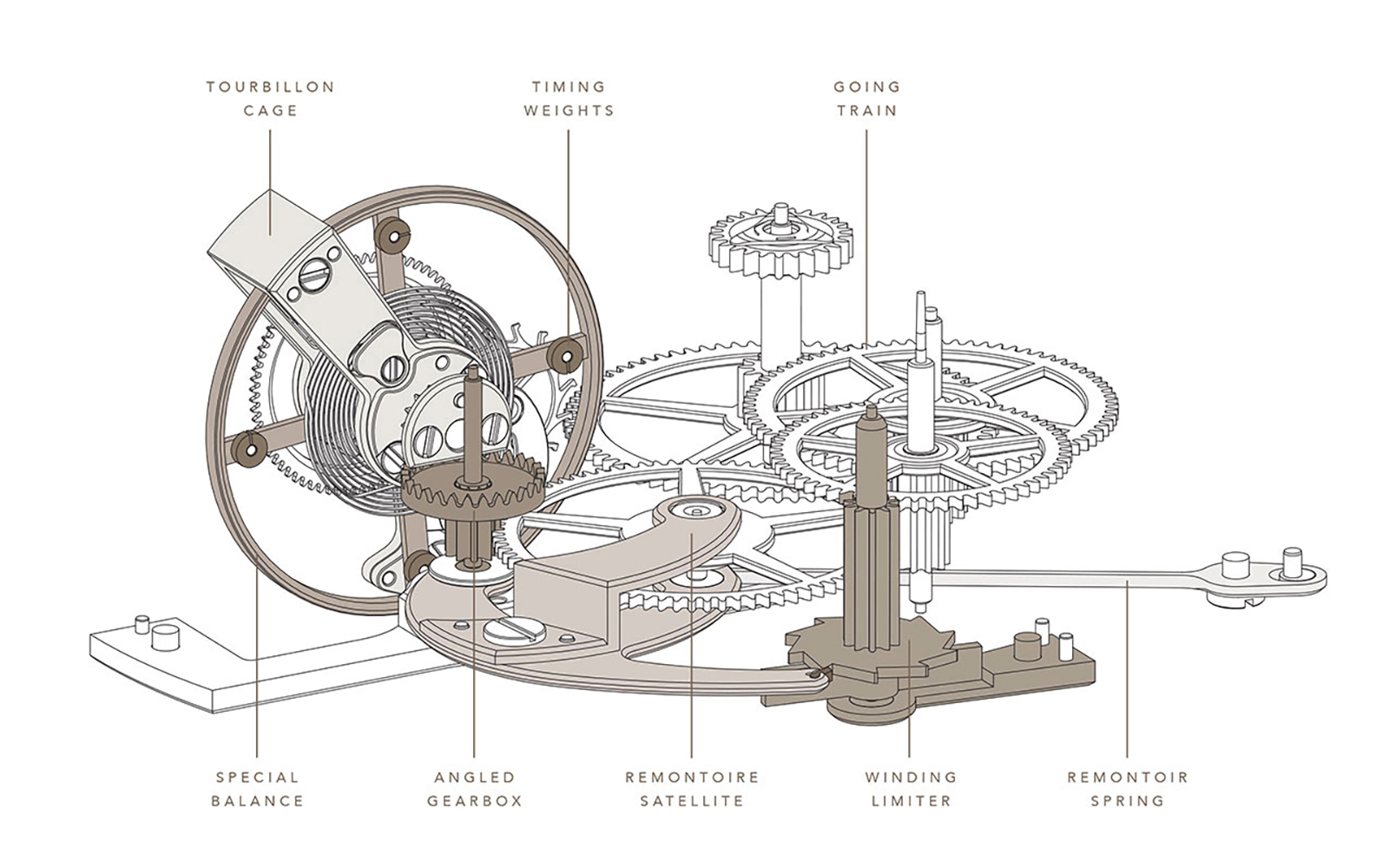
An illustration of remontoir d’égalité inside the Tourbillon Vertical. Diagram – F.P. Journe
The remontoir inside is not unique to the Souverain Vertical though; it is a long-established invention of Mr Journe that has been used across a diversity of watches, from the Chronomètre Optimum, which has a deadbeat seconds hand, to the Vagabondage III, where the remontoir is used to power the digital jumping seconds.
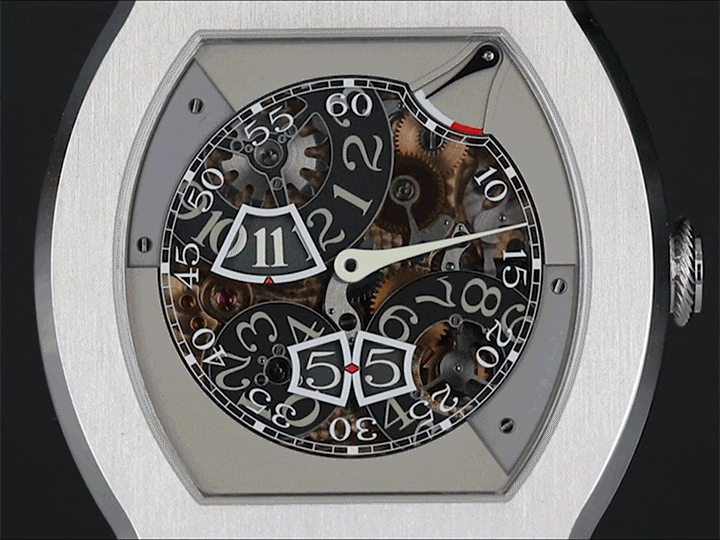
The F.P. Journe Vagabondage III with digital jumping seconds. Animation – F.P. Journe
The indirect one-second remontoir
One would be remiss without mentioning A. Lange & Söhne. The L094.1 in the Richard Lange Jumping Seconds incorporates a jumping seconds using a remontoir, but with a separate gear train. More simply, the mechanism can be described as the having a bolt-on deadbeat seconds, as in the JLC Geophysic True Second, but built on a gear train featuring a remontoir. But in this case, the jumping seconds is regulated by the remontoir, making it integral to the gear train.
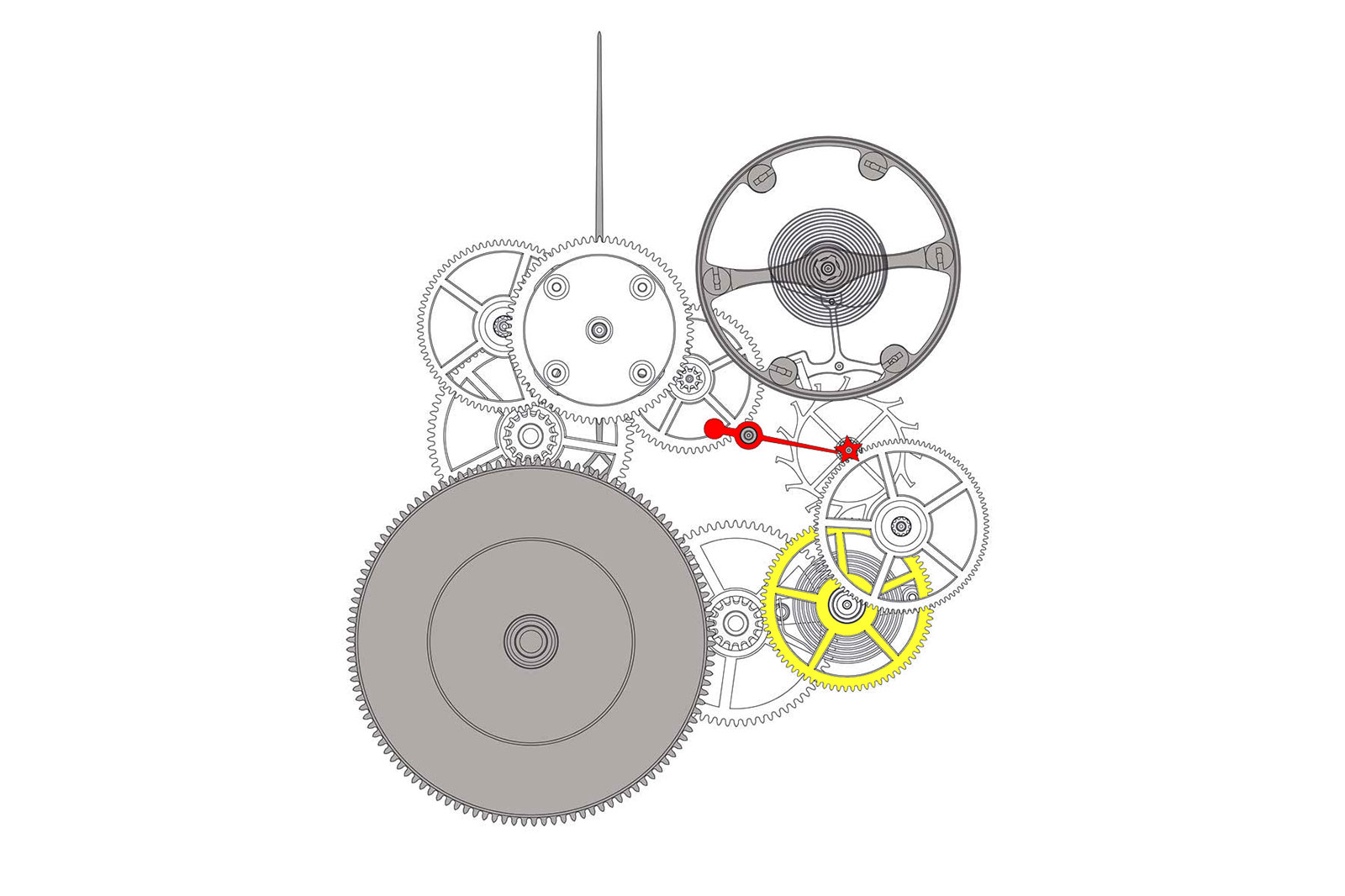
The gear train of the L094.1 with the remontoir (in yellow), and the star-and-flirt mechanism (in red). Diagram – A. Lange & Söhne
From the above diagram, we can see the similarity between the jumping seconds complications of Lange and JLC. However, in the L094.1, with the additional remontoir mounted on the third wheel, the mainspring is stopped while the escapement goes on for six beats. At that instant at the end of the sixth beat, the flirt is released from the star, and the flirt flies 360º before hitting the next spoke on the star.
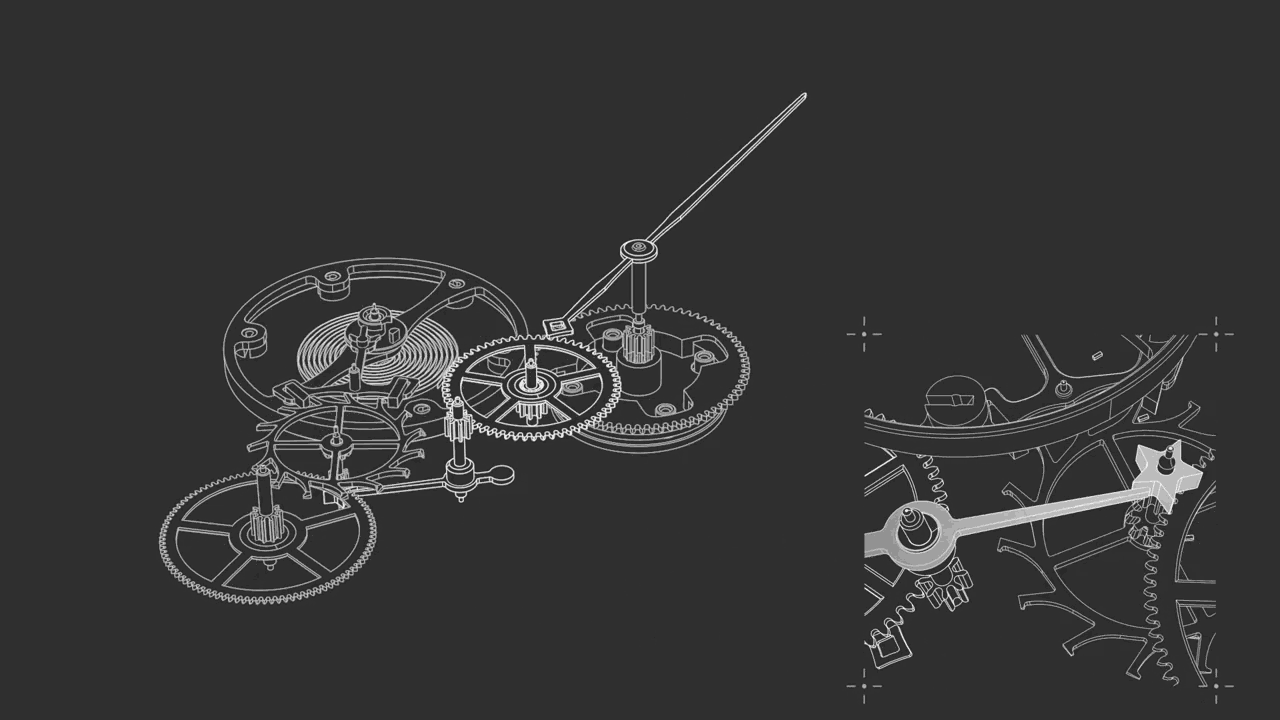
The jumping seconds mechanism of the L094.1 in action. Animation – A. Lange & Söhne
This motion enables the jumping seconds to advance, while also unlocking one step of the mainspring, in order to rewind the remontoir. Thus, the star-and-flirt system used to advance the jumping seconds simultaneously unlocks the remontoir, making it analogous to the ratchet wheel-lever system used in the F.P. Journe construction.
Conclusion
Philosophically it is more satisfying to know that a seconds hand is driven directly by the going train, instead of indirectly driven as in a bolt-on jumping seconds. The seconds, minute and hour hand will always be in perfect synchrony through an intrinsic design choice of using a remontoir – which is the more functional complication – over an ad hoc option of adding the jumping seconds onto a base movement.
For such a seemingly futile indication, it seems that watchmaking has devoted an inordinate amount of time to it. Pursuing chronometry is just one part of the game; displaying chronometry through a well-conceived seconds indication is another.
Perhaps the deadbeat seconds is meant for the collector who demands the nth degree of mechanical achievement – the instantaneous jumping minute counter in a chronograph for instance – which is of little practical utility but perhaps the epitome of technical achievement combined with aesthetic beauty.
Back to top.

